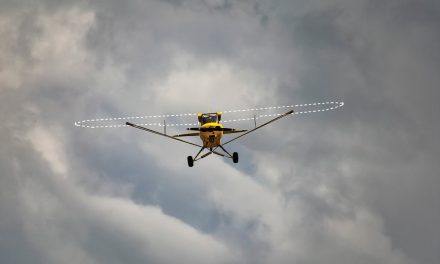Limits, What’s Covered, and Choosing Cessna Aircraft Liability Coverage
You may have heard that as of late March 2021, Utah is now requiring a minimum of $100,000 in liability insurance (or proof of financial responsibility) for GA aircraft owners. A lot of people seem to be asking, “So what? I thought insurance is required. Why the new law?” Well, that is the kicker: Aviation insurance is not like auto insurance — it is not required in nearly every state like auto insurance is.
I researched the requirements for the U.S. and the best that I can tell is that only 11 (now 12) states require proof of insurance or financial responsibility. Minnesota looks to be the only state to require aviation insurance. The rest require proof of financial responsibility (cash deposit, surety bonds, etc. — it varies by state). I did find the September 2015 Government Accountability Office (GAO) report “Observations Related to Liability Insurance Requirements and Coverage for Aircraft Owners,” which provides a list as of 2015. Of course, that report was before the Utah change.
It appears the new Utah Aviation Liability Insurance Amendments (H.B.77) were prompted by a couple of crashes. I don’t have all the specifics about the accidents, but the first appears to be an aircraft that crashed on a roadway and hit a car in 2017 with no significant injuries. A lawsuit has been filed by the automobile operator. More recently, a Cherokee Six crashed on takeoff in 2020 and destroyed a house, killing the homeowner, the pilot, and two of the five passengers.
The result of these crashes is this new law that requires aircraft owners in Utah to have at least $100,000 of general liability insurance for their aircraft, kind of like the automobile requirements. Seems fair enough, I guess. But, in my opinion, this situation does have a few issues that need to be addressed. Before I go over those, let’s talk about the basics of liability.
Aircraft Liability insurance basics
Typically, aircraft liability insurance coverage in an aviation insurance policy will be for property damage and bodily injury. You need to know the basic definitions to understand the coverage. The following definitions were taken from various policies and simplified as best as possible.
“Property damage” means any physical damage to “tangible” property. This coverage does not cover the aircraft itself, any of your (the pilot’s) property or property that you are in charge of. This just covers property belonging to others that was damaged by the accident. This damage might include the loss of use of the property. Examples include houses, automobile, crops, etc.
Liability also covers “bodily injury,” which is pretty straightforward. This means the physical (bodily) injury of or the death of a person other than the operator of the aircraft.
Oftentimes there is another type of coverage included or added with the liability called medical payment (med pay). This is the amount that the insurance company will pay for each person’s medical expenses. Most companies throw in a small token amount (like $5,000) for free.
What does aircraft liability insurance protect you from?
If you have an accident in your aircraft, the liability coverage will protect you from lawsuits from people who are injured, any heirs of anyone who is killed in the accident, and from anyone who has property destroyed or damaged up to the limits of the policy.
It’s that simple — well, almost. Deciding how much to buy makes the process a lot harder. Before you buy, ask questions. Pick a good independent agent and ask them about the coverages that they represent. Don’t be hard on them, just make sure that they can clarify the specifics of the policy they are offering.
The standard liability coverage is $1 million per occurrence for bodily injury and property damage with a limit of $100,000 per passenger (or per person). If your aircraft is involved in an accident (with or without you) the maximum the insurance company has agreed to pay is $1 million dollars! This is the per occurrence amount.
Unfortunately, if you injured or killed anyone in the aircraft, the coverage would be limited by the per person or per passenger limit. That means $100,000 would be the maximum limit the insurance company is obligated to pay per passenger. If the policy states “per person” that limit is for anyone, whether they were a passenger or a bystander.
Your minimum coverage should include, if at all possible, the “per passenger” limit. In this way, if you injure someone outside the aircraft, you still have the total $1 million coverage to work with. Only a passenger in the aircraft is limited to $100,000!
If you have a four-seat aircraft, it covers a total passenger limit of $400,000. And don’t forget, you, the owner/pilot, are not covered! Why you ask? This is liability coverage. This is to protect you from lawsuits where you are found liable, but you can’t really sue yourself. There is a clause here. If you loan the aircraft to a qualified friend, they may be the pilot but still be considered a passenger and protected to the limit.
Smooth limits
Through the years, companies, agents, underwriters, and marketing departments have recommended that single (smooth) limits be purchased. These single limits would provide more coverage for the insured. But what they neglect to tell you is, many companies have underwriting requirements that are so difficult that the coverage is not available. Most transition pilots will not qualify.
But a single limit does help, especially if there are very few passengers in the aircraft. Basically, if a pilot/owner and passenger are injured and there is a policy for $1 million combined single (smooth) limits, the passenger has up to $1 million to use from the policy for bodily injury. If there are two passengers, each has $500,000. Five passengers each have $200,000. Simply put, the more passengers, the less coverage per passenger.
And you must remember that the total cannot pass the $1 million limit per occurrence. If, at the same time, there is an injury or property damage on the ground outside the aircraft, the per person amount would be reduced again. Remember, there is always a per occurrence limit! While there is more coverage for the average owner if you buy the single limit, it won’t always provide you with as much coverage as you think. Don’t get me wrong, this is still a great option, but it might not be for you.
Now, if all of this seems really confusing, it is! Pull up a chair and join the group. I don’t think there are any simple answers. Each policy reads slightly differently. As an informed consumer, you need to make sure that you understand those differences.
You also need to evaluate the type of passengers you carry and the type of estate you have. A good risk manager would be really helpful about now. That risk manager would take all the different insurance coverages and try to balance them to achieve the maximum coverage for the lowest price. Maybe you have an umbrella policy that starts after a $1 million limit, or maybe it starts after $5 million. You might need an aviation coverage that has a $5 million per occurrence limit, but you never carry passengers, so you only need a $100,000 per passenger limit. There are lots of options.
What should you do?
In every seminar, I always give the same advice, and I cannot stress this enough: Ask questions! Ask if there are any limits – person, passenger, or family. Check to see if you have liability coverage in a borrowed or rental aircraft. Does the liability include premise coverage (cover your hangar exposure)? Are there any destinations that are not covered or have different limits? Can you purchase “smooth” coverage without passenger limits? These are the basics. Before this point, you need to know what other coverage you have (homeowners, business, etc.) and if they will affect or be affected by the aviation limits.
Overall, agents and companies want you to have the best coverage for your individual situation. You can try to buy as much insurance as the company will sell you (let’s not forget, this is a business; agents and companies make money on the sale) or you can buy a minimum coverage and hope for the best. You can also carefully evaluate your flying and try to find a policy that provides the coverage that fits your specific needs. For what it’s worth, when I first started in the business, an underwriter told me that most claims would be settled within the limits of the policy. Through the years, no one has ever come out and denied that rationale. Of course, let’s be realistic, in a hypothetical situation where you crash into a school or church, I don’t think you could buy enough insurance to protect you from the lawsuits.
Now back to Utah
Disclaimer time: This is my opinion based on the articles I read on the topic.
Even though the state requires insurance, you can’t buy $100,000 limits. Most companies start higher than that. Usually, $500,000 is the minimum and the premium for that level isn’t really much of a savings — just go for the standard $1 million limits.
The law appears to require the pilot to “maintain public liability insurance coverage for the aircraft that conforms to the requirements described in Section 31A-22-1300.” The pilot in 2017 does not appear to be a resident of Utah. So, an assumption could be made that he would not have been required to buy coverage. It also looks like transient pilots would not need to meet the requirement either. The same can be said for the 2020 crash. It looks like they were from out of town, too.
Plus, it sounds like the 2017 pilot was doing a pre-purchase flight on an aircraft he was buying, indicating it was not his aircraft. What was his insurable interest? If he had not bought the aircraft yet (the sale transaction had not been completed) the seller would be responsible for the insurance.
But could the pilot still be considered negligent and liable as the pilot? Probably. I would think that might be the time for non-owned (renters) insurance.
And as far as the required levels of insurance in those other 11 states, most of them are using what appears to be automobile type limits, such as $20,000, $50,000, or even $100,000. I did not find any requirements for a $1 million limit, which is what the aviation insurance companies would offer.
Additionally, a bigger drive is the local airport. That is where we see most of the push for insurance. To rent a hangar or tie down at an airport often requires proof of insurance and usually listing the airport or FBO as an additional insured. And some of these requirements are hard to meet because they require higher limits of liability than are available. Anyway, aviation insurance is not like other insurance businesses. You need to talk to people that know the business and the aviation industry. Use these professionals in conjunction with your other insurance people and only purchase what you really need.






